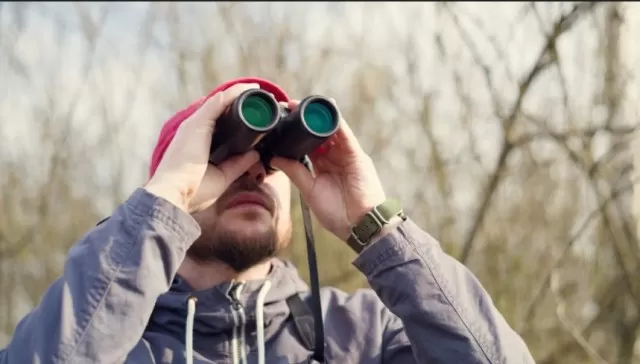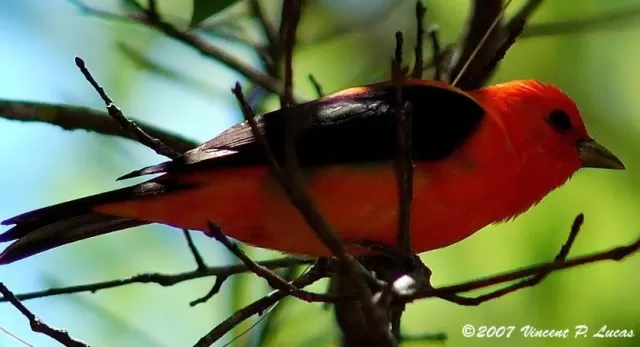The Top US Birdwatching Destinations.For those who find solace in the mesmerizing world of birds, observing these avian wonders from your backyard might have been your go-to pastime. However, if you’re ready to take your birdwatching adventures to the next level, you’re likely curious about the finest locations across the country for this cherished hobby. To assist bird enthusiasts from coast to coast, Lawn Love, a digital platform for lawn care services, has recently unveiled its curated list of the top cities for birdwatching.
In an effort to compile this invaluable resource, the company meticulously evaluated the 200 largest cities in the United States. Their methodology hinged on four essential categories: accessibility, diversity of bird species, popularity among birdwatchers, and commitment to conservation efforts. Researchers left no stone unturned, considering factors such as the presence of local birdwatching groups, the richness of bird species, the prevalence of Audubon chapters, and the existence of wildlife refuges. A comprehensive blend of 14 unique metrics was employed to calculate a score out of 100 for each major city, resulting in a well-rounded assessment of the nation’s prime destinations for birdwatching.
The Top 4 Best Cities for Birdwatching

Birdwatching is a beloved pastime for nature enthusiasts and wildlife lovers.
If you’re looking for the best cities to indulge in this hobby, here are the top five cities renowned for their excellent birdwatching opportunities:.
Tucson, Arizona.
Portland, Oregon.
San Francisco, California.
Minneapolis, Minnesota.
These cities combine urban living with rich opportunities to observe and appreciate the diverse world of avian life.
So, grab your binoculars and embark on a birdwatching adventure in one of these top destinations.
Tucson, Arizona: A Birdwatcher’s Paradise
Tucson, Arizona, is a birdwatcher’s paradise, renowned for its diverse avian population and stunning natural landscapes.
This Southwestern city offers a unique blend of urban living and breathtaking desert scenery, making it an ideal destination for bird enthusiasts. Here’s why Tucson is a top choice for birdwatching:.
Location: Nestled in the heart of the Sonoran Desert, Tucson provides access to a wide range of desert, mountain, and riparian habitats.
This diversity of landscapes attracts a rich variety of bird species.
Mild Climate: Tucson’s climate is conducive to year-round birdwatching.
With over 350 days of sunshine annually, you can explore the city’s natural wonders and bird habitats in all seasons.
Santa Catalina Mountains: Just north of Tucson, the Santa Catalina Mountains offer prime birdwatching opportunities.
Explore Mount Lemmon, a sky island that rises nearly 9,000 feet, to observe different species as you ascend through various ecological zones.
Migratory Pathway: Tucson lies along the path of several important bird migration routes.
During migration seasons, you can witness a stunning influx of birds passing through the region.
Rich Biodiversity: Tucson’s avian population includes a variety of hummingbirds, roadrunners, hawks, owls, and numerous desert species.
It’s a haven for birdwatchers seeking both common and rare birds.
Reid Park: Reid Park, located in the heart of Tucson, is a popular birdwatching spot.
The park’s lakes attract waterfowl and wading birds, providing an excellent opportunity for urban birdwatching.
Organ Pipe Cactus National Monument: Just a short drive from Tucson, this national monument is home to many unique desert birds, including the Gila woodpecker and cactus wren.
Community of Birders: Tucson has a thriving community of birdwatchers.
Local birding clubs, events, and organized birdwatching outings offer ample opportunities to connect with fellow enthusiasts.
Whether you’re a seasoned birder or just starting to explore the world of birdwatching, Tucson’s natural beauty and diverse birdlife provide an excellent backdrop for your avian adventures.
So, grab your binoculars, explore the city’s various birding hotspots, and enjoy the incredible birdwatching experiences that Tucson, Arizona, has to offer.
Portland, Oregon: A Birdwatcher\’s Dream Destination

Portland, Oregon, is a dream destination for birdwatchers, offering a perfect blend of urban living and access to pristine natural habitats.
Known for its lush green spaces and proximity to the Pacific coast, Portland provides an ideal setting for birdwatching enthusiasts. Here’s why Portland stands out as a top choice for birdwatching:.
Diverse Ecosystems: Portland’s varied ecosystems, from forests and wetlands to the Pacific coastline, support a wide array of bird species.
This diversity ensures that birdwatchers can observe both local and migratory birds.
Urban Parks: The city boasts an abundance of urban parks, including Forest Park, Powell Butte Nature Park, and Oaks Bottom Wildlife Refuge.
These natural reserves are havens for numerous avian species, such as herons, ospreys, and woodpeckers.
Migration Hotspot: Portland is strategically located along the Pacific Flyway, a major migration route for birds traveling between North and South America.
During migration seasons, you can witness an impressive variety of bird species passing through the region.
Proximity to Water: The presence of the Willamette River and the nearby Columbia River provides critical habitats for waterfowl, shorebirds, and wading birds.
These water bodies offer prime birdwatching opportunities.
Expert Community: Portland has a vibrant birdwatching community, with local clubs, guided tours, and regular birding events.
This allows enthusiasts to connect with like-minded individuals and learn from experienced birders.
Heron Rookeries: The region is home to several great blue heron rookeries, where you can witness these majestic birds nesting and raising their young.
Rare Sightings: Portland occasionally serves as a hotspot for rare bird sightings, attracting birdwatchers from across the country.
Birding enthusiasts have the chance to spot unique and uncommon species.
Accessible Trails: The city and its surroundings offer an extensive network of well-maintained trails, making it easy to explore birding hotspots and natural areas.
Whether you’re a seasoned birder or a beginner, Portland’s natural beauty and rich birdlife create the perfect backdrop for your birdwatching adventures.
Grab your binoculars, explore the city’s green spaces and wildlife refuges, and immerse yourself in the incredible world of avian wonders that Portland, Oregon, has to offer.
San Francisco, California: A Birdwatcher\’s Paradise by the Bay
San Francisco, California, is not only famous for its iconic landmarks and cultural diversity but also for being a haven for birdwatchers.
With its unique blend of coastal and urban environments, the city offers a rich diversity of bird species and stunning natural beauty. Here’s why San Francisco is a top choice for birdwatching:.
Coastal Diversity: San Francisco’s location along the California coast provides a wealth of birdwatching opportunities.
The city’s coastline, including areas like Crissy Field and Lands End, offers prime spots for observing shorebirds, seabirds, and waterfowl.
Rich Habitats: The city’s diverse ecosystems encompass tidal marshes, rocky shorelines, and lush parks.
These habitats support a wide range of bird species, from pelicans and cormorants to snowy egrets and peregrine falcons.
Urban Green Spaces: San Francisco boasts numerous parks and green spaces within the city limits, making it easy for urban birdwatchers to observe local species.
Golden Gate Park, for example, is home to a variety of songbirds and waterfowl.
Migratory Hub: San Francisco is a vital stopover point for migratory birds along the Pacific Flyway.
During migration seasons, you can witness an influx of bird species passing through the region.
Community Involvement: The city has an active birdwatching community, with birding clubs, nature centers, and organized birdwatching outings.
This allows bird enthusiasts to connect with fellow nature lovers and benefit from the knowledge of experienced birders.
Presidio of San Francisco: The Presidio, a former military base turned national park, provides excellent birdwatching opportunities.
You can spot a variety of raptors, songbirds, and waterfowl in this historic setting.
Rare Sightings: San Francisco occasionally experiences rare bird sightings that attract birdwatchers from near and far.
These sightings add an element of excitement and discovery to your birdwatching adventures.
Conservation Efforts: The city is committed to preserving natural habitats and supporting bird conservation.
Many initiatives aim to protect local bird species and their ecosystems.
Whether you’re a seasoned birder or a novice, San Francisco’s stunning natural landscapes and diverse birdlife offer a fantastic backdrop for your birdwatching experiences.
So, grab your binoculars, explore the city’s coastal and urban birding hotspots, and immerse yourself in the remarkable world of avian wonders that San Francisco, California, has to offer.
Minneapolis, Minnesota: A Birdwatcher\’s Gem in the Midwest

Minneapolis, Minnesota, may not be the first city that comes to mind for birdwatching, but it’s a hidden gem for avian enthusiasts.
Known for its chain of lakes, urban parks, and natural beauty, Minneapolis offers a wealth of birdwatching opportunities. Here’s why Minneapolis stands out as a top choice for birdwatching:.
Chain of Lakes: The city is blessed with a chain of picturesque lakes, including Lake Harriet, Lake Calhoun, and Lake of the Isles.
These bodies of water provide critical habitats for waterfowl, wading birds, and a variety of songbirds.
Migratory Hotspot: Minneapolis is strategically located along the Mississippi Flyway, a major migration route for birds traveling between their breeding and wintering grounds.
During migration seasons, the city witnesses a significant influx of bird species.
Urban Green Spaces: Minneapolis takes pride in its extensive park system, offering birdwatchers access to lush green spaces teeming with local avian species.
Spots like Minnehaha Park and Theodore Wirth Regional Park are known for their bird diversity.
Resident Birds: The city is home to various resident bird species, including bald eagles, great horned owls, woodpeckers, and waterfowl.
These birds can be observed year-round.
Natural Reserves: Nearby natural reserves like the Minnesota Valley National Wildlife Refuge and Eloise Butler Wildflower Garden and Bird Sanctuary provide protected habitats for a wide range of bird species.
Community Engagement: Minneapolis has a passionate birdwatching community with local clubs, events, and guided birdwatching tours.
These opportunities allow bird enthusiasts to learn from experienced birders and share their love for avian wonders.
Winter Birding: Even in the winter months, Minneapolis offers unique birdwatching experiences.
Observing northern species in a snowy landscape is an adventure in itself.
Nature Centers: The city’s nature centers, such as the Eloise Butler Wildflower Garden and the Spring Peeper Meadow, provide educational resources and opportunities for birdwatching.
Minneapolis’s combination of urban amenities and access to nature makes it an ideal destination for birdwatchers of all levels.
Whether you’re a casual observer or a dedicated birder, the city’s natural beauty and diverse birdlife offer a fantastic backdrop for your birdwatching adventures. So, grab your binoculars, explore the city’s lakes and parks, and immerse yourself in the captivating world of avian wonders that Minneapolis, Minnesota, has to offer.
*The information is for reference only.